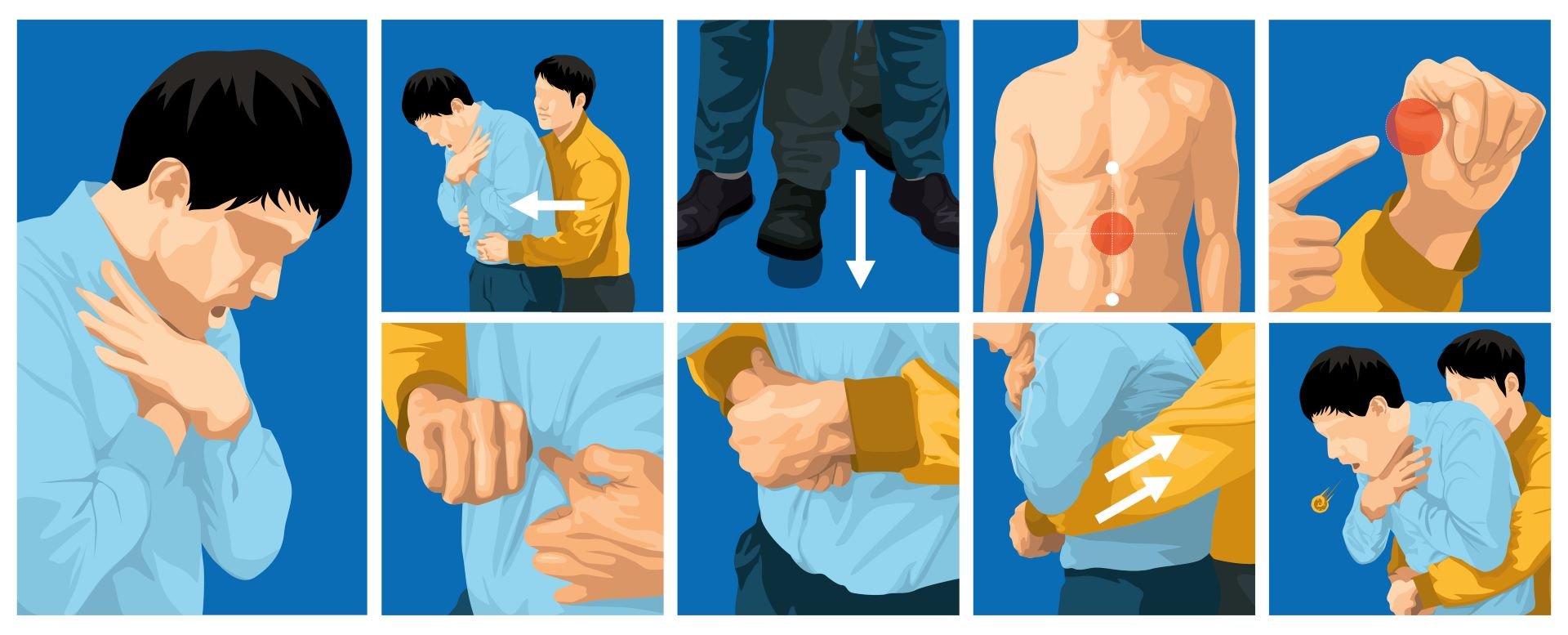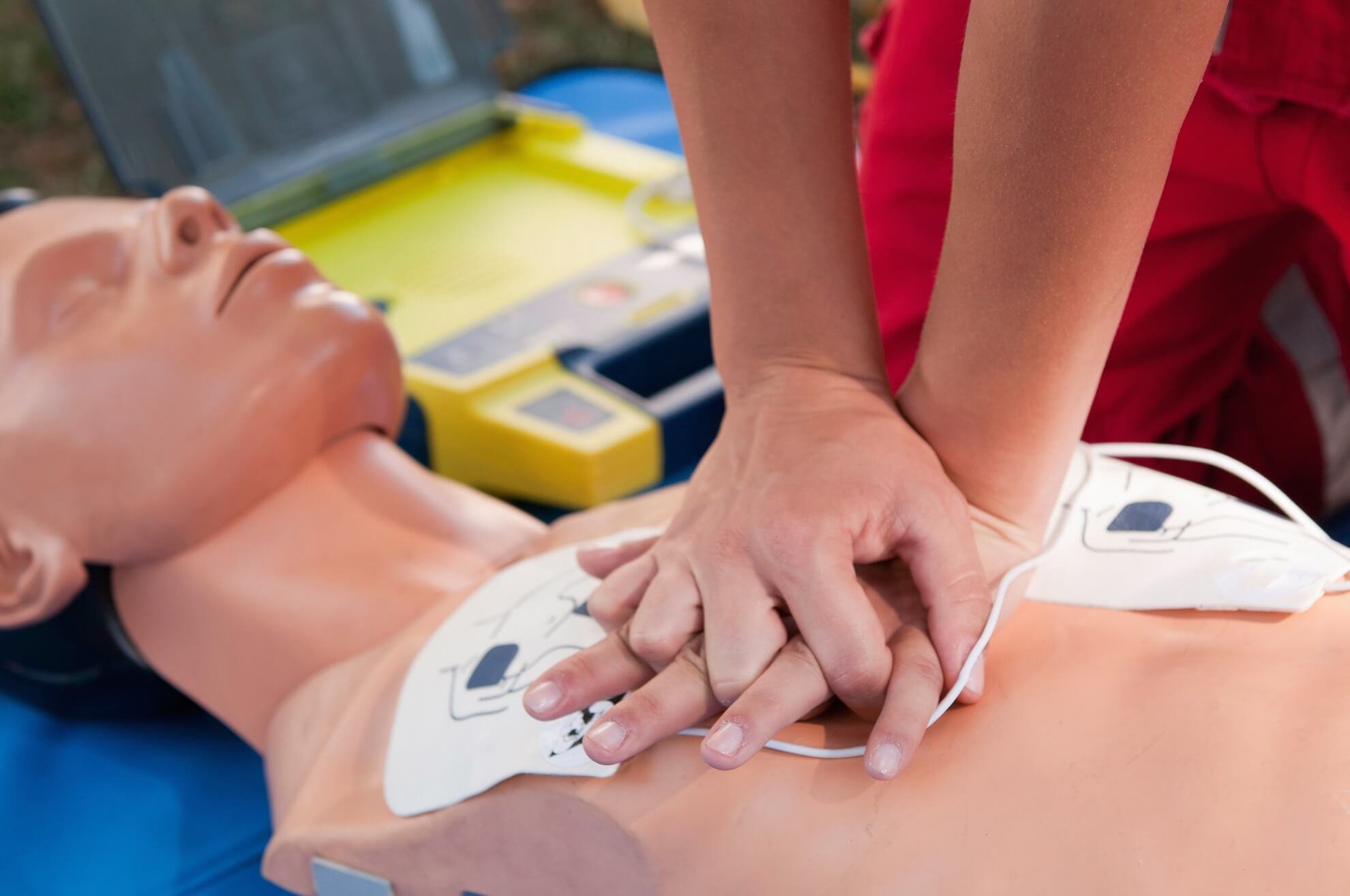What to do for choking?
Understanding Choking: The Basics
What is Choking?
Choking occurs when a foreign object becomes lodged in the throat or windpipe, blocking the flow of air. In adults, a piece of food often is the culprit. For kids, toys and coins are often to blame.
Causes of Choking
The most common cause of choking is eating too quickly or not thoroughly chewing food before swallowing. Choking can also occur from laughing while eating, or drinking alcohol, which can numb the throat, making it easy to choke.
Signs That Someone is Choking
Symptoms to Look Out For
Key signs of choking include inability to talk, difficulty breathing or noisy breathing, sudden violent coughing, change in skin colour, clutching at the throat, and loss of consciousness.
When to Act
The moment you notice these signs, it's crucial to react promptly. Time is of the essence when dealing with a choking incident.
Immediate Actions: What to Do for Choking
Self-Help Techniques
If you're alone and choking, you can perform an abdominal thrust on yourself. Lean forward and cough forcefully. If that doesn't help, position yourself over the back of a chair or railing and press your abdomen against it.
Back Blows
Stand behind them, slightly to one side. Support the chest with one hand and give 5 sharp blows between the shoulder blades with the heel of your other hand. This manoeuvre can be performed on both adults and children, with varying degree of force dependent on the size of the person.
Abdominal Thrusts
If back blows did not clear the obstruction, you can try abdominal thrusts. Stand behind the person who's choking. Place your arms around their waist and lean them forward slightly. Make a fist with one hand, place it just below their ribcage (where the diaphragm sits) and grasp the fist with the other hand. Press hard into the abdomen with a quick, upward thrust. Repeat this 5 times.
Chest Thrusts
Chest thrusts can be used on a baby (0-1 year old) if back blows have not worked to clear the obstruction. Position yourself in the same way you would if you were delivering CPR on a baby. Instead of using your 2 fingers to press down into the chest, use them to push inwards and upwards towards the face at a 45 degree angle. Again repeat this 5 times, alternating with back blows.
Seeking Professional Help
When to Call an Ambulance
If the person can't speak, is gasping for air, can't cough forcefully, or is turning blue, call 999 immediately.
What to Expect at the Hospital
At the hospital, a doctor might perform an endoscopy to remove the blockage or, in severe cases, surgery might be required.
Preventing Choking Incidents
Choking Prevention Tips
Chew your food thoroughly. Avoid talking or laughing while eating. Keep small, choke-prone items away from young children.
The Role of First Aid Training
Everyone should have basic first aid training. It equips you with the knowledge and confidence to act quickly in choking incidents. At NR Medical Training we offer a whole range of first aid courses. Whatever business sector you’re in we can adapt to the needs of your business. Our first aid training courses are only ever instructed by experienced healthcare professionals. In addition our courses are fun and engaging.
Conclusion: Handling Choking with Confidence
Choking can be a frightening experience for both the person choking and the rescuer. But with the right knowledge and quick action, it's possible to handle the situation confidently and effectively.
Frequently Asked Questions
1. What is the first thing to do when someone is choking? If they can't cough, speak, or breathe, perform 5 back blows immediately, alternating with 5 abdominal thrusts. If that doesn't work, call emergency services.
2. Can you choke and still breathe? Partial blockage may still allow some air passage. But if the airway is fully blocked, breathing is impossible until the obstruction is cleared.
3. What should you not do when someone is choking? Do not attempt to stick your fingers or any object down their throat. It may push the obstruction deeper.
4. How can I prevent choking? Always chew food thoroughly, avoid distractions while eating, and keep small objects out of the reach of children.
5. Is it worth learning abdominal thrusts? Absolutely! Knowing how to properly perform abdominal thrusts can be the difference between life and death in a choking incident.








